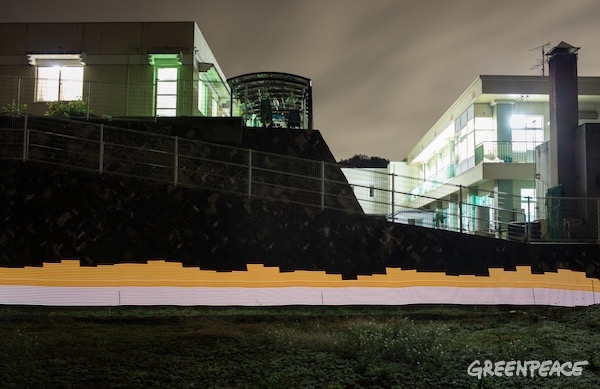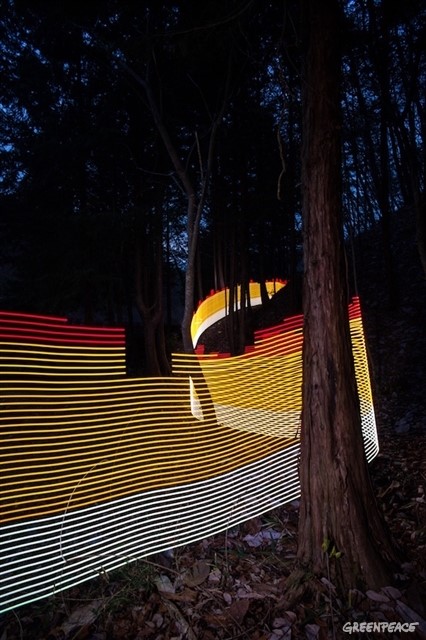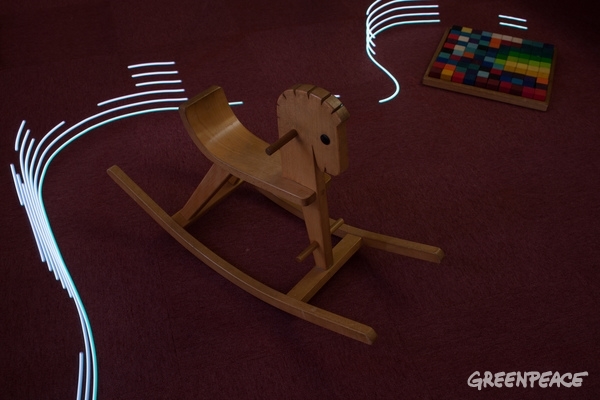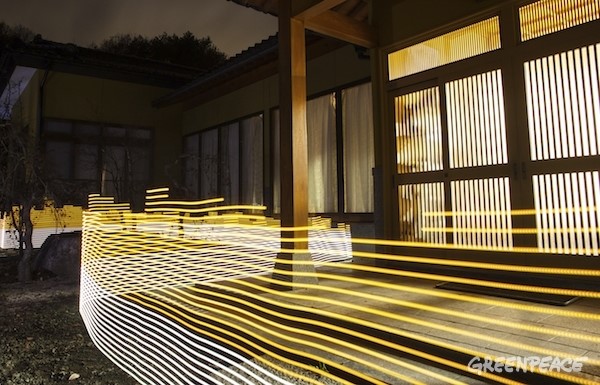Greg McNevin sheds light in this Greenpeace blog entry how LEDs are illuminating invisible radiation levels in Chernobyl and Fukushima.
Thirty years after Chernobyl and five years after the triple meltdown at TEPCO’s Fukushima Daiichi nuclear power plant, the shadows of both disasters still loom large.
In the wake of Fukushima, I joined Greenpeace monitoring teams on the ground trying to quantify and communicate the impact of radiation on the population. Documenting environmental damage and injustice is something Greenpeace has been doing for more than 40 years, but one question has always bothered me. How do you shine a light on something that is invisible?
 |
|
(All photos courtesy of Freelance photographer Greg McNevin) |
We found our answer in a custom built LED light stick which, when connected to a Geiger counter, allows radiation levels to be measured and displayed in real-time. Take a long exposure photograph of a contaminated area and walk through it with this tool, and suddenly you have an undulating wall of light, exposing and visually mapping radiation in the environment.
 |
|
A man and a woman from Greenpeace. The woman is holding the custom built LED light stick connected to a Geiger counter. |
White shows radiation levels that are "acceptable" according to the Japanese government's post-disaster decontamination target. Orange shows radiation exceeding these target levels, which pose greater risks without protection measures. Red shows levels that the Russian government deems necessary for resettlement.
Using this tool in areas affected by Chernobyl and Fukushima, we found that places which have been “decontaminated” by the authorities consistently exhibit radiation levels elevated above official limits. Radiation endures. In Russia’s Bryansk region, 30 years after the disaster, we found levels of contamination comparable to places in Fukushima today.
Whether it be five or thirty years later, environmental radiation risks remain, and communities continue to struggle and decline in an increasingly complicated new normal. In Starye Bobovichi, a few hundred kilometres from Chernobyl, principal Tatyana Dorokhova believes that contaminated materials may have ended up at her school. This could explain why we found patches of elevated radioactivity around its gardens and some playground equipment, but consistently low levels elsewhere.
Sadako Monma went to great lengths to clean her nursery school, Soramame, and eventually moved it to the outskirts of Fukushima city where radiation levels were lower as cleaning was simply not enough. Despite relocating her business, the number of children in her school has not recovered. In 2016 she will close the business, 20 years after it started.
The majority of houses in the village of Staryy Vyshkov in Russia are abandoned and in ruins. It is easy to see why, when we find radioactive contamination comparable to places like Iitate in Fukushima.
Occasionally a new resident moves into one of the abandoned houses.These are typically people too old to worry about radiation affecting their health or too poor to have other choices. Those that have remained since the disaster, such as shopkeeper Natalya Rueva, have nowhere else to go, and radiation has since touched every aspect of their lives.
Once a community disintegrates under the transparent shadow of radioactivity, it is extremely difficult to rebuild. Iitate farmers Toru Anzai and Hiroshi Kanno know this firsthand. After living in temporary housing for years, neither believe they can return home as their communities and way of life are long gone.
Twenty-five years separates the victims of Fukushima and Chernobyl, but their struggles are intensely familiar, and as present as ever. Radioactivity accumulates and lingers in the environment in the long term, eventually permeating every aspect of affected communities’ lives.
Stand up for the survivors of nuclear disasters and add your voice to the Thunderclap calling for change.
Greg McNevin is a freelance photographer. Follow him on Twitter and Instagram.




















